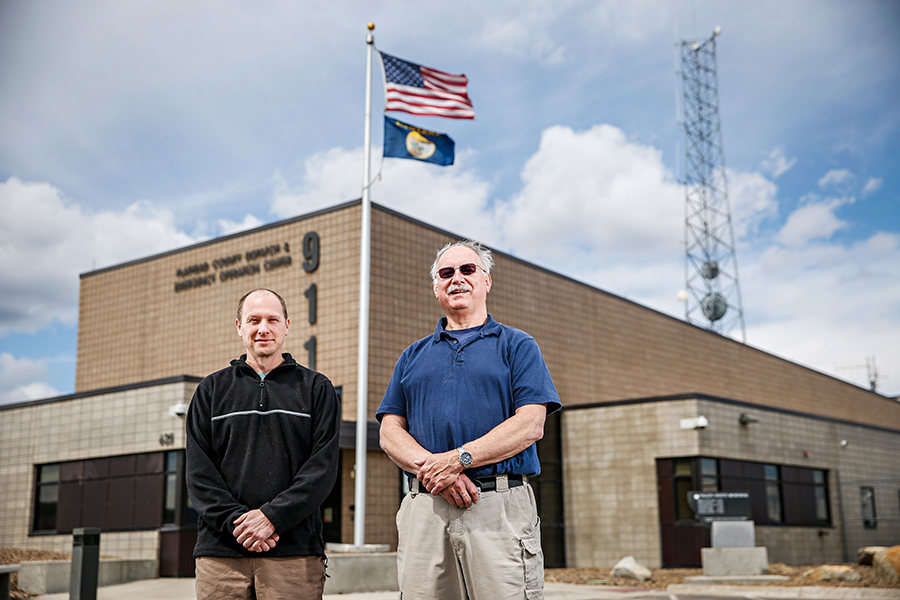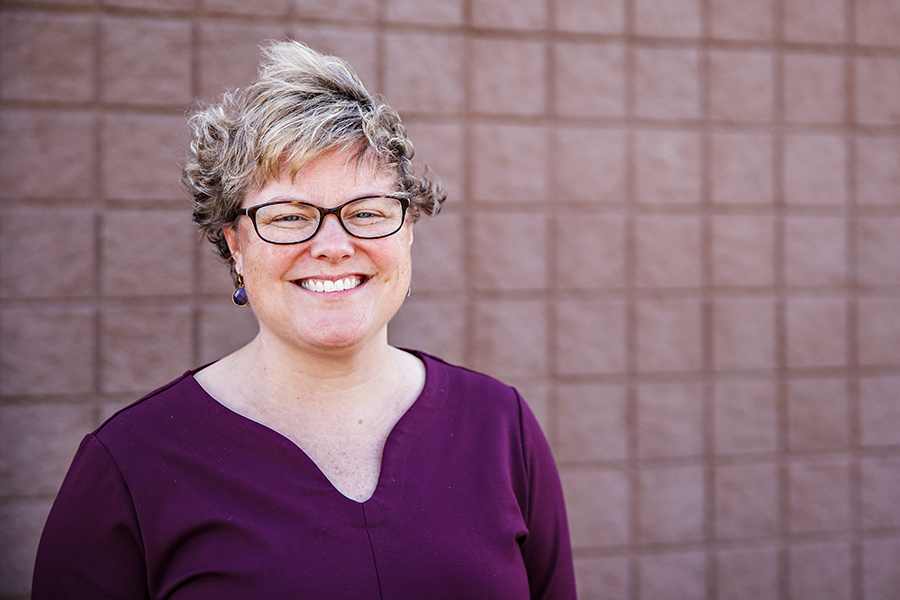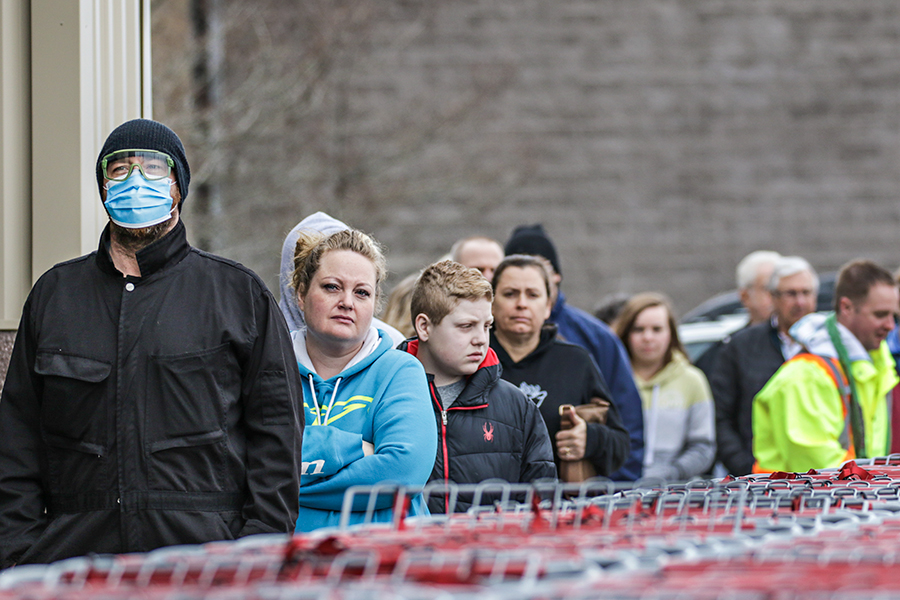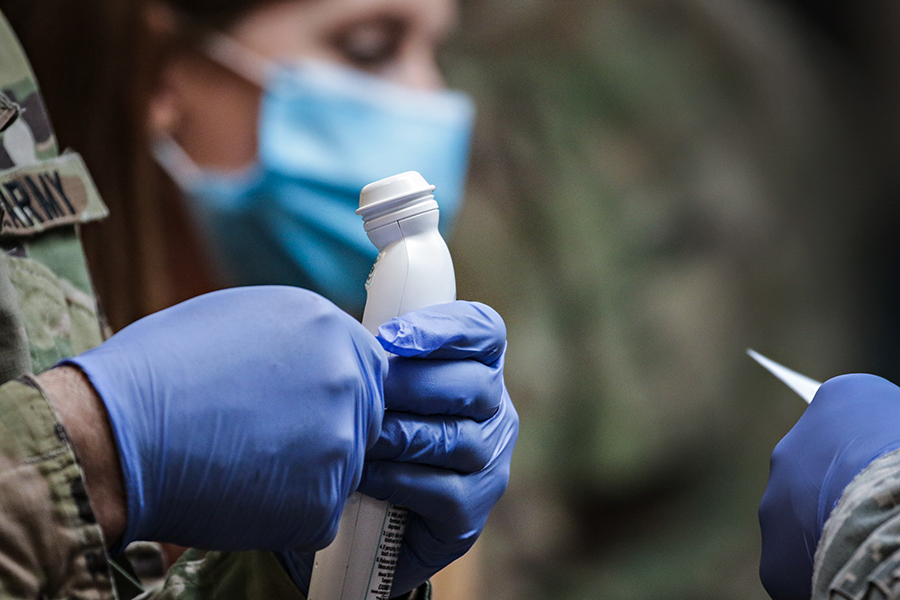Behind the Scenes of a Pandemic
Members of the Flathead County incident management team bring experience from wildfire emergencies and other disasters to take on COVID-19
By Maggie Dresser
As a retired fire chief for the Blankenship Fire Department in Columbia Falls, Ed Burlingame is no stranger to emergencies or disasters.
In the 16 years he’s been in the Flathead Valley, he’s spent most of that time working at the fire department and helping attack Montana’s annual wildfires, including the Glacier Rim Fire in 2015 and the Sprague Fire, which burned 16,982 acres in Glacier National Park three years ago.
The 66-year-old has spent much of his career working on incident management teams, which are the structured systems that enable personnel to respond to emergencies. One of those roles was in the Washington D.C. area following the 9/11 attacks, where he served as a supply liaison for search-and-rescue teams.
So once the COVID-19 pandemic began infiltrating Montana and Flathead County, he and Big Mountain Fire Chief Ben DeVall swiftly shifted into familiar roles as Planning Section Chiefs, where they develop plans for the team managing the emergency on a local level.
“The structure of how things are done across the board is irrespective of a health-care event or a wildfire or a hazardous-material event or an earthquake,” Burlingame said. “They’re all handled in the same manner of structure because it provides guidance.”
Through the National Wildfire Coordinating Group (NWCG), both Burlingame and DeVall are credentialed to lead a Type 3 Incident Management Team, which manages smaller response groups, like the 12-person team responding to COVID-19 in Flathead County. They also have Federal Emergency Management Agency (FEMA) training, which provides broad structured response training for a multitude of disasters.
As a retired fire course instructor for Montana State University’s Fire Services Training School in the northwest region, Burlingame had already taught several incident management courses for the county health department, which many current team members had participated in and are now using in this real-life scenario.

While different emergencies use the same basic structure, Burlingame says the geographical parameters of incidents like wildfires or disasters differ from a health pandemic.
“The biggest difference with a wildfire or hazardous-material incident is it’s generally geographically isolated,” Burlingame said.
Variables like human travel, personal interactions and the coronavirus’ invisibility add challenges. But even with these unique characteristics, Burlingame says the management behind the pandemic is very similar to a wildfire.
“In terms of relation to the two, one you can visibly see,” he said. “The other you cannot.”
The 12 members’ roles on the Flathead City-County Health Department’s pandemic incident management team include the incident commander, public information officer, liaison officer, operation section chief, a logistics section chief and financer who oversees expenditures. Working seven days a week, they coordinate with up to 26 public health staff to organize plans to ensure sufficient supplies, relay public information and make local closure and opening decisions to keep the county safe.
Team members’ days begin at 9 a.m. with a morning briefing facilitated by Burlingame or DeVall to set the stage for the day and to discuss how they will tackle the most immediate and long-term COVID-19 challenges.
“We start with a briefing meeting about what happened last night and what we don’t all know,” Flathead City-County Incident Commander Hillary Hanson said. “(We talk about) what positives did we get, what did we figure out about those positives, did anything else occur that needs to set the tone for the day, and we dive into what’s our plan for today.”

Following that initial 30-minute morning briefing, Burlingame and DeVall develop an incident-action plan in which they create reports and produce public information documents. At 1 p.m., video and teleconferences begin with agencies like the state health department, Kalispell Regional Healthcare or incident management teams in other counties. At 2 p.m., a strategic planning meeting begins, which identifies the team’s needs, like personnel or equipment needs. At 5 p.m., the team meets with public officials for updates.
“One of the pieces about incident command and operating in this structure is you really want to create the battle rhythm … that consistency and rhythm to your day,” Hanson said.
As the team works to manage the pandemic on a day-to-day basis, Hanson says those strategic planning meetings also focus on planning for weeks and months down the road.
“I’m not sure a lot of citizens understand there are a lot of things going on behind the scenes that they might not be aware of to first keep them safe and second try and get things back to normal,” DeVall said.
DeVall, who has also worked on countless wildfires and incident management teams in the area, says the first few days for the pandemic’s team were chaotic back in mid-March, but he says that’s pretty typical until everyone gets into a rhythm.
“Usually it’s that first three days that’s pretty chaotic,” DeVall said. “But things have mellowed significantly. The health department folks aren’t used to this structure, but they’re doing a spectacular job filling the roles (which) are so outside their normal duties for some of them.”
Since the incident management team formed in mid-March, DeVall has split his time between his positions as the planning section chief and as the fire chief at Big Mountain Fire Department, where he’s worked for 22 years.

Hanson, who was appointed by the Flathead County Commission, spends her time as both the incident commander and public health officer. While her scheduled days are Sunday through Thursday, she works from home on Friday and Saturday, while Emergency Preparedness Coordinator Jennifer Rankosky takes over Hanson’s position as incident commander on her days off.
As the incident commander, Hanson makes all final COVID-19 related decisions for the county.
For example, before Gov. Steve Bullock directed the state to close restaurants and businesses on March 20, Hanson made the difficult decision to close those businesses a day earlier to prevent COVID-19’s spread.
While the decision had negative economic impacts, Hanson’s priority is to protect the community’s health.
“I had been tasked with being the health officer of Flathead County and my role is to ensure the health of the community,” she said. “And given the information that I had available, I felt that that was an essential order that needed to happen.”
In addition to tough decisions, Hanson also serves as a primary spokesperson to the media and ensures updated COVID-19 information is relayed to the public as quickly as possible. Three public information officers on the team are responsible for posting updates on their website, Facebook, Instagram, letters to businesses and press releases.
With constant misinformation surrounding COVID-19, Hanson stresses the importance of getting out information in a timely manner to the public.
“Public information is maybe 50% of what’s going on … and 50% is what the best course of action is to avoid exposure,” Burlingame said.
Hanson served as Flathead County’s Public Health Officer prior to the pandemic and remains in that role while leading as the incident commander. Her role as public health officer involves guiding specific groups like school superintendents or city council officials on how they should proceed amid the pandemic.
Now that Bullock has started a phased reopening of the state, which allowed some businesses to open on April 27 and restaurants, bars, breweries and distilleries to reopen on May 4 with restrictions, Hanson says the pressure could now fall back on the counties to make decisions.
In an April 24 statement, the Flathead County Commission praised Hanson and the incident management team for “a tremendous job responding to and managing the coronavirus pandemic within our community.”
“The County appreciates all of their hard work and long hours,” the commissioners wrote.
Hanson refers to Montana’s low cases with 442, in comparison with neighboring Idaho with 1,802 as of April 24, as a public health success. But as the stay-at-home directive lifts and businesses begin reopening doors, Hanson emphasizes that the virus is still a risk and Montanans need to maintain precautions. And the incident management team will continue to develop plans, offer guidance and make decisions to keep Flathead County safe.
“This is just the start of what’s going to be many months of dealing with COVID-19, and so I think helping people understand the importance of what’s to come and being able to effectively communicate, that is always a struggle,” she said.